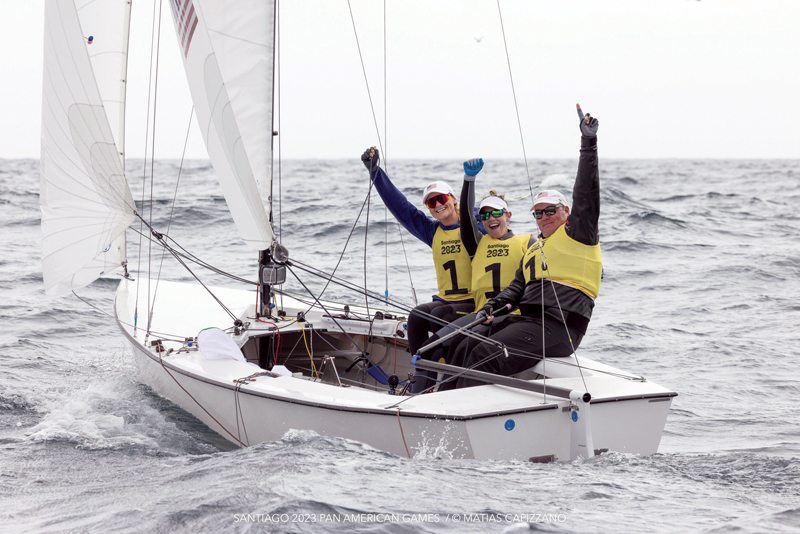Picking the right gate mark.
On his Sailfaster podcast, Pete Boland featured North Sail's Allan Terhune. Allan is a J/22, J/24, and 6-meter world champion, holder of 11 North American Championship wins in multiple classes, a Pan-Am Games gold medalist, and a multi-year finalist for Rolex Yachtsman of the Year. Here’s an extract:

Allan, you compared the gate rounding to a race start, in that you can make or break your race by your gate decision and how you execute the rounding.
Yeah, the gate is a crucial part of the race; it’s like a second start in a way. You’re at the bottom of the course near the starting line again, but it’s almost harder than a start because boats are in line bow-to-stern versus bow-to-bow as at the gun. Fundamentally, you really have to execute the turn through the gate and hold a lane. That’s the number one part of gate roundings, regardless of which gate mark is favored. Executing the turn, getting the boat around the mark, and going close-hauled at speed and having your lane open; that’s the story. I think a lot of times this gets lost in translation when everyone’s thinking about which gate mark to go to, and they’re not ready for the turn. Nine times out of 10, if you can just execute the actual maneuver, you gain!
When do you start planning for the gate rounding?
Halfway down the run because otherwise it’s too late. If you do it a third of the way out, you’re probably already locked into one side or another.
Okay, so we’re halfway down the downward leg… what goes through your mind about which way to go?
I think the most important thing is which mark lets you execute the turn and get out of there as quickly as possible. Where do I think there’s more congestion, and how do I avoid that? Because when you get caught in the pile-up or the melee at your preferred mark, there’s always someone who goes to the other mark, rounds clean, and gains, even if it’s the unfavored side of the course!
I generally try and turn left if I can because if I have to tack, at least I’m tacking onto starboard and will have right of way. Whereas if you round the righthand mark, go off on starboard, and another boat is ahead upwind and you need to tack out, now you’re on port, ducking the train of boats. And it just gets worse!
What happens when you are forced to make a late decision about which gate to round?
If you’re the tactician and know you could be in trouble, you communicate that to the team. You might say, “I’m thinking left right now, but just be prepared for either way; we’re going to be deciding last minute.” Then, everyone knows; at least it’s on the table. I think that’s where clear communication of what the expectations are going in helps the whole procedure. While that may leave people uneasy, they’re more comfortable knowing this could change. So, they can at least start thinking about it and preparing.




